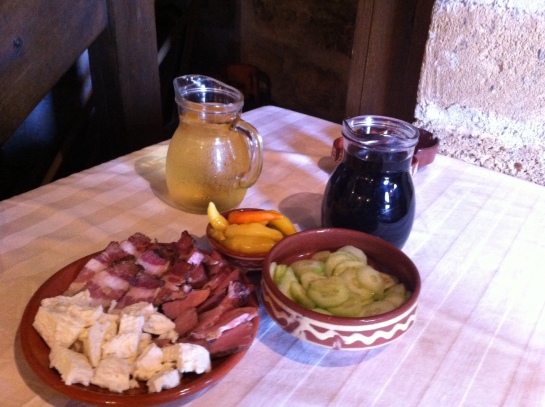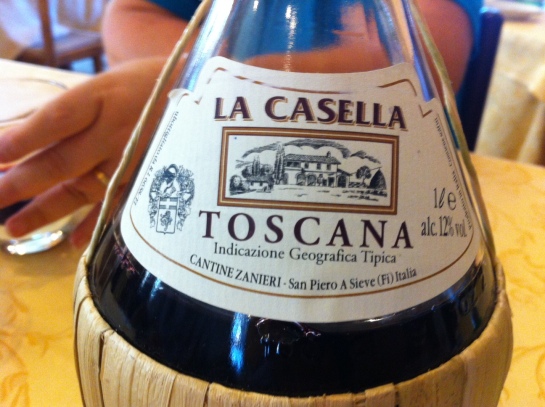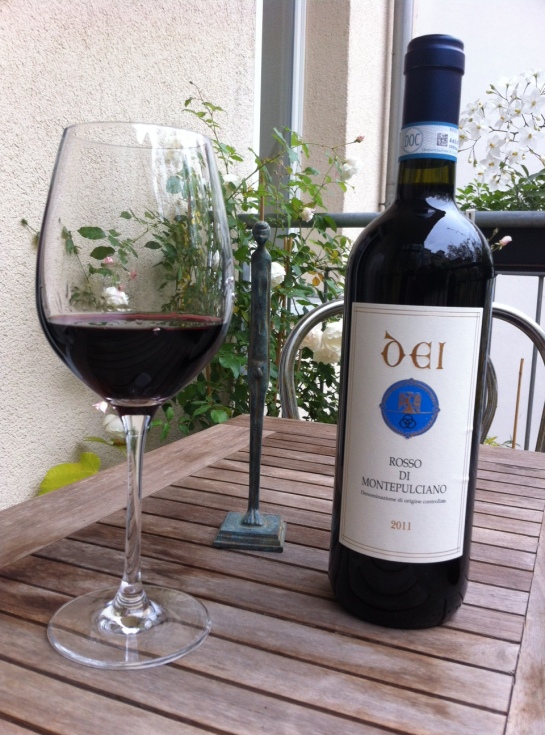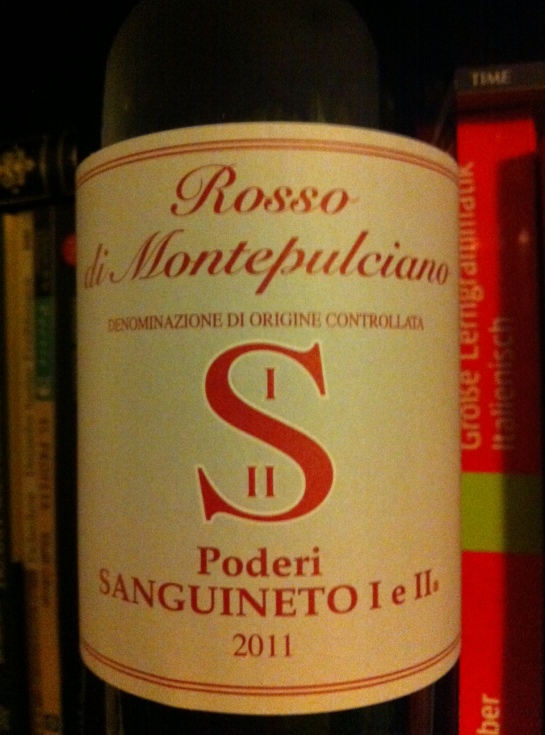Since there are some fine wines from this area, the name of Negotin has already appeared on my blog several times. Today I want to write more on the region, which is among the best in Serbia.
Find on the map the point, where Serbia, Romania and Bulgaria meet and you’ll see what area we are talking about. Negotin is situated close to the place where the Timok river joins the waters of Danube. The valley of the former river is planted with vineyards since centuries. Its picturesque character stays in contrast to the town of Negotin itself, founded on a perfectly flat terrain. The town is known rather for its music festival called ‘The Days of Mokranjac,’ or in the graceful Serbian ‘Mokranjčevi dani.’ The Negotin-born Stevan Stojanović Mokranjac is probably the best-known Serbian composer, mostly of the choral music.

Aldo at the house and monument of S. Mokranjac.
But for the wine lovers the most important name is Rajac, which is merely a small village, some 25 km from Negotin. In the Serbian appellation system, which is still in its introductory phase, the area we are talking about is called ‘Krajinski podrejon,’ that is the subregion of Krajina or Borderland, and makes part of the ‘Timočki rejon’ or Timok river region. One can hear also the term ‘Timočka krajina,’ as the whole valley of Timok is a borderland.
There are several autochthonous grape varieties in the region, mostly very rare. Only in the recent years, some of them have been rediscovered and new exciting wines are gradually entering the market. Noteworthy are Bagrina and Black Tamjanika. The former smells like the flowers of robinia (Robinia pseudoacacia) and thus is called after them, ‘bagrem’ being their Serbian name. The latter gives wines rich in extract, low in acidity, with an intense aroma of different berries. A glass of this specialty is perfect to finish a meal.

a stone cellar in Rajac
My Italian friend Aldo and I arrived in Negotin from Belgrade by bus. It was the very end of April – Serbian hills and mountains drowned in fresh green of young leaves and intense colors of blossom: from white of late fruit trees to purple of lilac. At the market square we had our Turkish coffee, called also Serbian or domestic (Serbian: domaća kafa), and two huge doughnuts.
Safe from low blood sugar, we took the small local train heading for Rajac. Just two cars, a friendly, relaxed conductor from whom one can also buy a ticket, and people returning to their villages, engaged in discussions, about inevitably better past, hard present, and unsure future. After several kilometers the first hills spring up from the plain. They become higher, covered with broadleaf forest, orchards and vineyards. In the valley, fields were mostly brown – intensely from freshly ploughed soil, or greyish from last-year weed stalks if abandoned. Air was scented with flowers and etheric oils released by the strong spring sun from the first leaves of aromatic herbs.

stone cellars in Rajac
The train station in Rajac was abandoned and ruined. The village itself was once a rich wine-producing community and you can still admire the tasteful stone arches over the gates, quite Byzantine in their style. Now, many houses are empty and there are few young people left. Children of many wine-producing families moved to big cities and are little interested in the continuation of the great traditions of Rajac.
There are no hotels there and you can stay in private rooms – fortunately, I would add. In few days, we learned a lot about Serbian culture. We started every day with slatko and glass of water, coffee and a glass of rakija. Our host was a wine producer himself. He and his mother, an older charming lady with always smiling light blue eyes, booked for us dinners in a small inn uphill, where the ancient cellars are situated. The wine cellars are uninhabited stone buildings on the top of the hill, while their owners live in the village in the Timok valley. In the small inn of ‘Sveti Trifun’ (Saint Tryphon, the patron saint of winegrowers), my Italian friend could try all traditional Serbian products as for the dinner the owner filled our table with different bread types: pogača, proja, kifle; with sudžuk sausage, pršuta ham, kajmak, ajvar, several type of cheese, and much more. From time to time, he or his wife appeared with small bowls of prebranac, a kind of bean stew, or veal soup (teleća čorba). All this was accompanied by homemade wine, rakija and brandy (vinjak).

the very first delicacies arrived, at ‘Sveti Trifun’
The cellars, in one of which is the inn, are still waiting to join the great family of UNESCO-protected cultural heritage objects. There is no doubt that they are unique – an old colony of houses, created for wine storing. Usually on weekends, the owners open the small cellars to visitors and you can go and try the wines. Only the wine brought out is to be paid, abundant degustation is free. Few stroll down the hill on their way back without singing, swaying, and cheerfully commenting the beauty of the nature they finally notice.
The wines are often rustic, a little bit old-fashioned; giving the idea how was wine before. There are also modern producers, notably the ‘Matalj winery’, already mentioned on my blog, and the ‘French winery’ (Francuska Vinarija) in Rogljevo, where a French family of Bongiraud discovered their perfect terroir. Interestingly, one of the varieties that give best results here is Gamay. The old autochthonous varieties need to be reintroduced, after the communist period when they were not supported by the government. The first wine growers return to Black Tamjanika, Bagrina, Prokupac, or Začinak. On the other side of the border, in Bulgaria, there is another Balkan variety gaining its popularity: Gamza, known to most of us under the name of Kadarka. In Serbia, this variety experiences its revival rather in the northern part of the country, in Vojvodina.
We returned to Belgrade with as much wine as we were able to carry. Do you need any other words of recommendation? 😉






